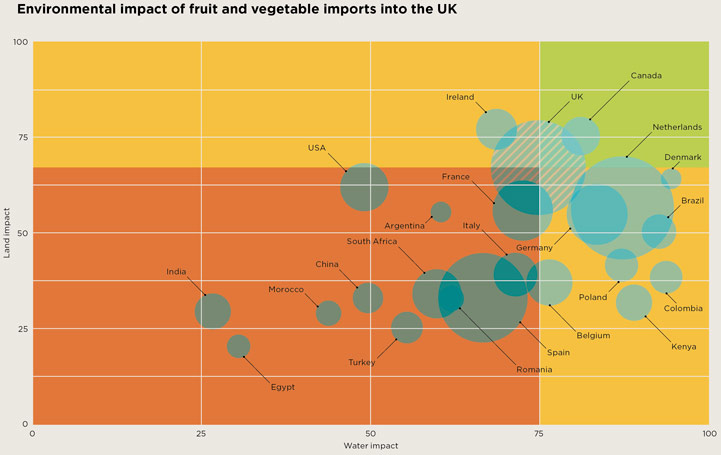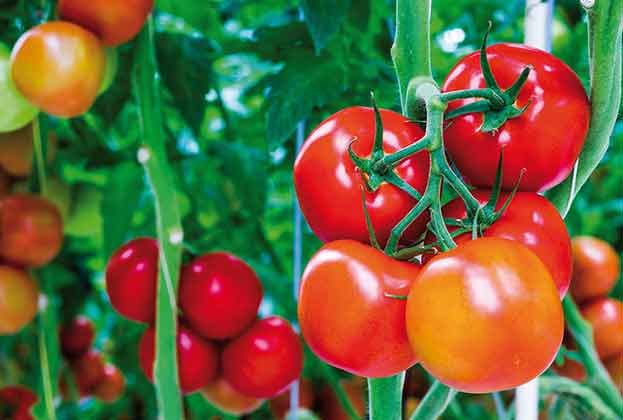The UK has a positive environment for sustainable agriculture but it is not being fully utilised
Savills Rural Research analysed a variety of datasets to better understand the environmental impact of food production in the UK compared to its main trading partners. The UK scores well for both land impact and water impact (see chart below). The score awarded to the UK for its environmental impact of agriculture on land is significantly better than average; 67 against an average of 40. Despite a higher global average score for water scarcity, the UK is still ahead; 75 against an average of 69. However, only around a quarter of UK fruit and vegetable supply is derived domestically. The remainder is imported.
Given the UK possesses a relatively sustainable and robust agricultural system, on-shoring will be a key step in securing our future food supply
Savills Rural Research
The majority of those imports (where value exceeds £100 million per year) are from just 28 nations. Such a poorly diversified supply network increases the risk posed by international events. Of the 22 nations where data is available, only Canada has water and land scores above that of the UK. Of our key trading partners, 55% are worse in both cases.
Given the UK possesses a relatively sustainable and robust agricultural system, on-shoring will be a key step in securing future food supply. But with around 70% of UK land area already dedicated to agriculture, this must be undertaken with diligence and intelligence. Complete self-reliance on food supply is not a realistic aspiration and is risky in itself, but in increasingly volatile circumstances, more could be done to develop UK food production.

The size of the bubbles represents the value of imports coming into the UK from that nation. All nations included supply over £100 million worth of fruit and vegetables to the UK per year. The UK bubble is sized according to the value of domestic production. The bubbles are positioned according to land and water impact scores derived from the Economist’s Food Sustainability Index. A higher score indicates more sustainable practices in the corresponding area.
Source: Savills Research, EIU, HMRC, Defra
Read the articles within Spotlight: Controlled Environment Agriculture below.
.jpg)


